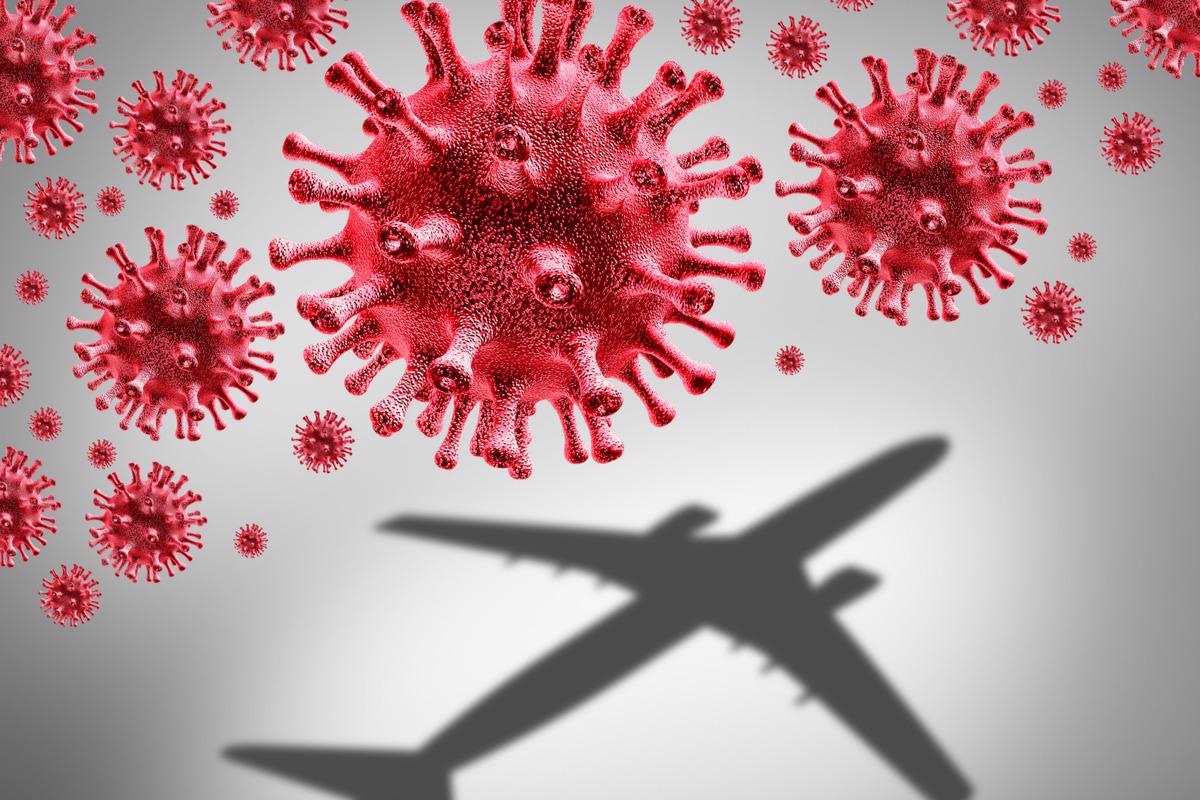To prevent the further spread of coronavirus disease-19 (COVID-19) infection, caused by the severe acute respiratory syndrome coronavirus-2 (SARS-CoV-2), most countries worldwide implemented travel restrictions. Researchers conducted epidemiologic and genomic studies to investigate in-flight SARS-CoV-2 infection associated with repatriation flights from India to Australia in April 2021. This study has been published as a research letter in Emerging Infectious Diseases.
 Study: Genomic Evidence of In-Flight SARS-CoV-2 Transmission, India to Australia, April 2021. Image Credit: Lightspring/Shutterstock
Study: Genomic Evidence of In-Flight SARS-CoV-2 Transmission, India to Australia, April 2021. Image Credit: Lightspring/Shutterstock
Background
The Australian government closed down its borders during the first SARS-CoV-2 epidemic wave. All international arriving passengers were required to follow mandatory supervised quarantine during this period. The first pandemic wave lasted till June 2020 in Australia.
In October 2020, a quarantine facility in Darwin, Northern Territory, Australia, received individuals who arrived via government-assisted repatriation flights. Researchers stated that two repatriation flights landed in Darwin on April 15 and 17, 2021, which were named flights 1 and 2, carrying passengers from two regions of India experiencing a major COVID-19 outbreak.
Scientists observed that compared to previous repatriation flights that landed in Darwin between October 2020 and April 2021, flights 1 and 2 carried a significantly higher percentage of COVID-19 positive individuals.
All passengers traveling on these flights tested negative for SARS-CoV-2 by quantitative reverse transcription PCR (qRT-PCR) within 48 hours before flying. Furthermore, wearing face masks was mandatory for all passengers except infants and children. During the study period, COVID-19 vaccination coverage among passengers was low, i.e., 7% of the passengers had received the first dose of the vaccine, and only fourteen passengers out of the total of 345 passengers received two doses of COVID-19 vaccine. When they arrived in Darwin, all passengers underwent supervised quarantine where they were tested for SARS-CoV-2 via the qRT-PCR method on days zero, seven, and twelve.
Key findings
Among the forty-seven passengers who tested SARS-CoV-2 positive, twenty-one tested positive on arrival (arrival case-patients), and twenty-six tested positive after a day of entering quarantine in Darwin (quarantine case-patients). Scientists reported that among the twenty-one-arrival case-patients, eighteen were asymptomatic. The qRT-PCR cycle threshold values of 86% of this group were 15.2. However, for quarantine case-patients median time of symptom onset was 5 days after arrival.
Researchers conducted genomic sequencing for 87% of SARS-CoV-2-positive passengers. They reported that 57% of passengers were infected with Delta variant, 21% with Kappa, 6% with Alpha, and 2% of passengers were infected with A.23.1 sublineage of SARS-CoV-2. Additionally, 59% of the SARS-CoV-2 positive sequence of the two flights belonged to one of six genomic clusters.
To assess if the passengers contracted the infection during the flight, researchers analyzed case interviews, flight manifests and performed genomic sequencing. Out of twenty-one arrival case-patients, four passengers identified as B, J, O, and T possibly transmitted the SARS-CoV-2 infection to more than eleven other passengers. The samples from these eleven passengers were sequenced and were found to belong to the same SARS-CoV-2 genomic clusters of B, J, O, and T. These passengers were seated in two rows of an arrival case-patient.
Scientists also estimated the secondary attack rates to be 6% for flight 1 and 2% for flight 2. They further observed that five case-patients were linked genomically. Hence, there was a high possibility that transmission had occurred before, during, or after the flight. Genomics refuted transmission to six quarantine case-patients seated within two rows of an arrival case-patient, connecting three to a different cluster.
Implications
After these two repatriation flights, other repatriation flights from India were suspended. However, flights resumed on May 15, 2021, and a mandatory 72-hour pre-flight quarantine of passengers within India was implemented. Two of the factors that contributed to a reduction in the repatriation cases were an increased vaccination rate and a decrease in the Delta wave in India and globally. The authors of this study emphasized that COVID-19 vaccination rates in Australia were low during the study period and quarantine was a vital part of reducing international incursions.
Researchers further indicated they did not exclude the possibility of transmission of the virus in the departure lounge and during boarding. The main strength of this study is the inclusion of complete pre-flight and post-flight testing and genomic sequencing. It provided strong evidence of in-flight associated SARS-CoV-2 transmission, based on two repatriation flights from India to Australia during the Delta variant wave in April 2021.